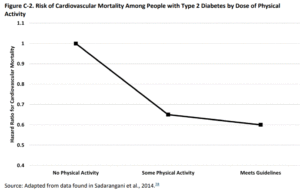The NIH’s dubious partnership in industry-funded alcohol research
Last week, New York Times reporter Roni Rabin wrote how the National Institutes of Health (NIH) solicited funding from alcohol companies to fund—and, distressingly, participate in the design of—a study of the effects of moderate drinking on heart disease risk.
This is not the first time Ms. Rabin has written about this study. In July, she described the study and its funding.
Since then, she has apparently been busy filing FOIA requests and conducting further interviews. These reveal that the NIH actively solicited industry funding and input into this trial.
The [NIH] presentations gave the alcohol industry an opportunity to preview the trial design and vet the investigators. Indeed, the scientist leading the meetings was eventually chosen to head the huge clinical trial.
They also made the industry privy to pertinent details, including a list of clinical sites and investigators who were “already on board,” the size and length of the trial, approximate number of participants, and the fact that they could choose any beverage. By design, no form of alcohol — wine, liquor or beer — would be called out as better than another in the trial.
But it gets worse. Boston University professor Michael Siegel tells his personal story of dealings with NIH’s National Institute of Alcohol Abuse and Alcoholism (NIAAA)
On January 16, 2015, I was called into the office of the Director of NIAAA and was essentially reprimanded for conducting NIAAA-funded research that was detrimental to the alcohol industry…At the meeting, I was told that I would never again be funded to conduct research on alcohol marketing, regardless of how highly my research proposal was scored by the scientific review panel.
Let me be clear: research ethics require funders to have no involvement in research design, conduct, or interpretation, lest they exert undue influence on the results.
Julia Belluz (Vox) put this study in context. She describes how
The NIH is now investigating whether the researchers violated federal policy by soliciting donations, and they’re appointing outside experts to review the design of the study. We don’t yet know the full story, and there’s surely more to uncover.
Anheuser Busch InBev, Heineken, Diageo, Pernod Ricard, and Carlsberg helped pay $67.7 million of the $100 million government study, which is currently underway. And even more troubling is that if you were a patient looking to enroll in the trial through the online clinical trials registry, you’d have no way of knowing about the industry’s involvement because that funding is not disclosed there.
Although I do not have much to say about the alcohol industry in my forthcoming book, Unsavory Truth: How Food Companies Skew the Science of What We Eat, I mention of this study as an example of how other industries skew research and also how pooling industry research funds is insufficient protection against conflicted interests (alcohol companies agreed to contribute 67.7% of the funding).
It’s good that the NIH has decided to investigate this dubious government-industry partnership, which so clearly seems aimed at marketing, not public health.





